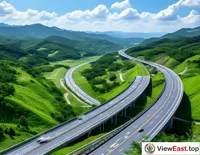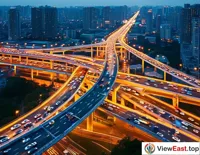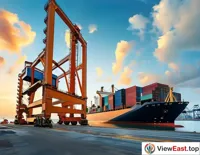







In China, the development of transportation networks is not only a bond connecting cities and rural areas but also a powerful engine driving socio-economic development. From the ancient Silk Road to modern high-speed railways, each leap in China's transportation has been a microcosm of the nation's progress. This article will comprehensively showcase the leapfrog development of China's urban-rural traffic networks and their vital role in national development.
The Historical Context: The Starting Point of Transportation Development
The story begins with the ancient Silk Road of China, one of the earliest transportation networks connecting Eastern and Western civilizations. Over time, China's transportation networks have evolved from horse-drawn carriages to steam locomotives and then to modern high-speed trains. Each innovation in transportation has been accompanied by significant societal and economic changes.
Reform and Opening Up: The Expansion of Transportation Networks
Since the reform and opening up, the development of China's transportation networks has entered the fast lane. The construction of highways, railways, and aviation infrastructure has reached an unprecedented climax. Especially the rapid development of high-speed railways has made "a thousand miles in a day" a reality, greatly shortening the distance between cities and promoting regional economic integration.
Technological Innovation: The Upgrade of Transportation Networks
Technological innovation is a key driving force behind the upgrade of China's transportation networks. From electronic ticketing systems to intelligent navigation technology, from autonomous vehicles to drone delivery, China continues to make breakthroughs in transportation technology. The application of these technologies has not only improved transportation efficiency but also enhanced travel experiences.
Green Development: A New Chapter in Transportation Networks
With the enhancement of environmental awareness, the development of China's transportation networks has begun to focus on green and sustainable practices. New energy vehicles, green ports, and ecological roads have emerged, showing a new direction in the development of China's transportation networks. Green transportation not only reduces environmental pollution but also increases energy efficiency.
Urban-Rural Integration: Balanced Development of Transportation Networks
In China, the development of transportation networks is not limited to cities but extends to rural areas. Through the "village connection" project, the transportation conditions in rural areas have greatly improved, providing strong support for rural economic development. The balanced development of urban and rural transportation networks allows residents in both areas to enjoy equal travel services.
International Cooperation: Global Vision of Transportation Networks
The development of China's transportation networks is also reflected in international cooperation. Through the Belt and Road Initiative, China has cooperated with countries along the route to build transportation infrastructure, promoting the interconnection of global transportation networks. China's global vision for transportation networks has not only enhanced the country's international influence but also contributed to global economic development.
Future Outlook: The Bright Prospects of Transportation Networks
Looking to the future, China's urban-rural transportation networks will continue to develop in the direction of intelligence, greenness, and internationalization. With the emergence of new technologies and continuous policy support, China's transportation networks will become more convenient, efficient, and environmentally friendly, providing a solid foundation for the country's sustainable development.